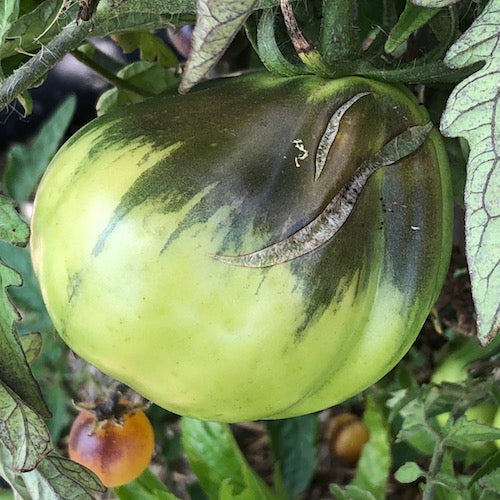After lamenting the serious drought of the last year, we finally got rain last week in southern Manitoba. And as the saying goes, when it rains it pours! The challenge is that extremes tend to be associated with problems, and when it comes to very dry followed by sudden rains there are a number of issues that come up.
The first thing that many gardeners are noticing is that in spite of the rain, garden soil may not be that much better hydrated. This has a lot to do with the nature of clay-based soils; when clay dries out it becomes very hard and the particles are arranged in sheets or layers that prevent moisture from soaking in. Instead, water tends to pool in low spots or runoff in sloped areas. The impact here is that deeper-rooted plants may have moisture in the top layers of their root systems but remain very dry lower down. This makes for a confusing situation in terms of additional watering and is certainly hard on the plants. Ultimately, the remedy is to continue to water (slowly and at the base of plants) on sunny, warm days, and remember that adding lots of organic material to clay soil is the best way to improve it - although that is a bigger picture solution and not one that can really help right now.
On the flip side, container plants may be saturated with water. Pots that have minimal drainage or deeper saucers are most affected, so check containers by tipping them a little to see if excess water drains out when adjusted. Since there is more rain in the forecast, pots that seem very wet can be moved to a more sheltered location and also check pots carefully before doing any supplemental watering (the cooler weather also causes pots to dry out less quickly).
A noticeable impact of big rain, particularly for containers and raised beds, is that nutrients can be flushed away from the soil causing plants to look lack-lustre. Where appropriate, it is still a good idea to apply fertilizer to keep plants looking their best into September. The "where appropriate" caveat has to do with the style of plant; perennials really should not be fertilized at this point in the season to prevent poorly-timed growth spurts whereas annuals, herbs and veggies will still benefit from feeding for another month or so.

Splitting shows up quickly on tomatoes after a sudden change in soil moisture
Perhaps one of the most frustrating consequences of suddenly wet conditions is the splitting that occurs on tomatoes. Not all varieties are as susceptible but generally larger, rounder tomatoes will show obvious cracks in the skin of the fruit when super hydrated. Excess moisture stimulates growth on the fruit that occurs faster than cells of the skin can accommodate, causing the splits.
You can eat slightly cracked tomatoes that otherwise look fine, but they definitely do not store for any period of time and will develop rot if left on the plants.
It is not recommended to use damaged tomatoes for any kind of processing due to the risk of bacteria being present. If you cannot use the tomatoes immediately or they are too blemished eat, it is best to cull them and allow the remaining fruit to develop and ripen (yes, there is still time!).
So, we are grateful for the rain while also noticing some of the challenging impacts of extreme conditions. Hopefully talking about these issues can help with understanding frustrations occurring in gardens right now, and at least for a few of the problems, finding ways to correct them.







